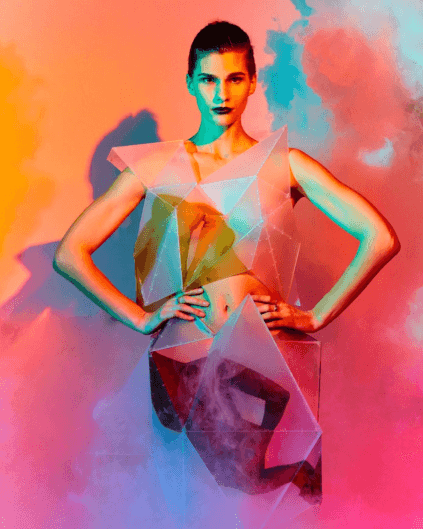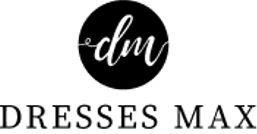
Fashion and Art Collide: Exploring the Intersection of Fashion and Fine Art
Share
The intersection between fashion and fine art is a captivating and dynamic realm where creativity, aesthetics, and self-expression merge. This intersection represents the symbiotic relationship between two distinct yet interconnected industries. Fashion draws inspiration from fine art, while fine art finds new forms of expression through fashion. The convergence of these two creative domains has resulted in groundbreaking collaborations, innovative designs, and thought-provoking artistic expressions. Moreover, the significance of the intersection between fashion and fine art cannot be overstated. It has had a profound impact on both industries, pushing the boundaries of artistic expression and challenging conventional norms.
Also, the purpose of this discussion is to explore the rich and fascinating connection between fashion and fine art. We will delve into the historical context of this intersection, examining the ways in which artists have influenced fashion throughout time. We will also analyze the artistic inspirations behind fashion design, the concept of fashion as artistic expression, and the fusion of fashion and fine art in presentations and exhibitions. Additionally, we will explore the role of fashion photography in bridging the gap between fashion and fine art. Finally, we will consider the future of collaboration between these two industries and the potential impact of emerging trends and technologies.
Table of Contents:
Historical Overview
The historical connection between fashion and fine art dates back centuries, with both disciplines influencing and inspiring each other. Throughout history, artists have played a significant role in shaping fashion trends and aesthetics. Paintings, sculptures, and other forms of visual art have often depicted clothing styles of their time, serving as a record and a source of inspiration for fashion designers. The elaborate gowns and intricate garments portrayed in Renaissance paintings, for example, influenced the fashion of the era, with designers replicating and interpreting these artistic representations in their creations.
Moreover, artists have had a profound influence on fashion, not only through their depictions of clothing but also through their ideas and concepts. From the avant-garde movements of the early 20th century to the Pop Art and Op Art movements of the 1960s, artists have pushed the boundaries of creativity and challenged traditional notions of beauty and aesthetics. Fashion designers, in turn, have looked to these artistic movements for inspiration, incorporating abstract shapes, bold colors, and unconventional materials into their designs. The collaboration between artists and designers has led to groundbreaking innovations and iconic fashion moments.
Furthermore, notable collaborations between fashion designers and artists have further solidified the intersection of fashion and fine art. One such collaboration is the partnership between Spanish fashion designer Cristóbal Balenciaga and artist Salvador Dalí. The two visionaries worked together in the 1930s, creating garments that merged Dalí's surrealistic motifs with Balenciaga's avant-garde designs. Another noteworthy collaboration is the ongoing relationship between fashion house Louis Vuitton and various contemporary artists. Louis Vuitton has invited artists such as Takashi Murakami, Yayoi Kusama, and Jeff Koons to reimagine the iconic LV monogram and create limited-edition collections that blur the line between fashion and art. In addition to collaborations, fashion designers have often drawn inspiration directly from the works of renowned artists.
Designers like Yves Saint Laurent, who famously referenced artists such as Piet Mondrian and Vincent van Gogh in his collections, have transformed iconic art pieces into wearable fashion. The merging of fashion and fine art has not only brought art into the realm of everyday life but has also challenged traditional notions of what constitutes art and what defines fashion. This historical overview highlights the enduring influence of artists on fashion and the ever-evolving relationship between these two creative realms.

Artistic Inspirations in Fashion
Fine art has served as a wellspring of inspiration for fashion designers, providing them with a rich tapestry of artistic ideas and concepts. The colors, textures, and compositions found in paintings, sculptures, and other art forms have been translated into stunning fashion designs. Designers often study the works of artists to extract motifs, themes, and visual elements that can be reimagined in clothing. This artistic inspiration gives rise to garments that become wearable interpretations of artistic expression, blurring the lines between fashion and fine art.
Moreover, the incorporation of art movements and styles into clothing has been a recurring theme in the fashion industry. From the abstract geometries of Cubism to the fluid lines of Art Nouveau, fashion designers have drawn upon various art movements to create unique and visually captivating garments. The bold and vibrant colors of Pop Art, for instance, have been reflected in clothing collections that feature graphic prints and vibrant color palettes. The elegant and ornate motifs of Art Deco have also found their way into fashion, inspiring designers to create garments with intricate beading, geometric patterns, and luxurious materials. Also, numerous iconic fashion pieces have been directly influenced by fine art, becoming synonymous with the fusion of fashion and artistic inspiration.
One notable example is the collaboration between fashion designer Elsa Schiaparelli and surrealist artist Salvador Dalí. Together, they created iconic garments such as the "Lobster Dress" and the "Tear Dress," which merged Dalí's whimsical imagery with Schiaparelli's avant-garde design sensibilities. Another influential piece is Yves Saint Laurent's "Mondrian Dress," which directly references the iconic compositions of Piet Mondrian's abstract art. These fashion pieces serve as visual testaments to the power of artistic influence and the enduring impact of fine art on the world of fashion.

Fashion as Artistic Expression
Fashion has long been recognized as a form of artistic expression, where designers use garments as their medium to convey ideas, emotions, and narratives. Like a painter's canvas or a sculptor's clay, fashion designers craft their creations to communicate their artistic vision. Through the manipulation of fabrics, colors, silhouettes, and textures, fashion designers create wearable pieces that evoke aesthetic responses and engage with the viewer. The artistry lies not only in the final product but also in the creative process, where designers carefully consider every element to bring their artistic vision to life. Moreover, fashion has also played a significant role in challenging societal norms and expressing individuality.
Throughout history, fashion has been a vehicle for social commentary, rebellion, and self-expression. Designers have used fashion as a means to question established norms, challenge gender roles, and advocate for change. From the avant-garde designs of Vivienne Westwood to the subversive creations of Alexander McQueen, fashion has been instrumental in pushing boundaries and provoking conversations about identity, politics, and cultural values. By defying conventions and embracing uniqueness, fashion as artistic expression empowers individuals to celebrate their individuality and assert their personal narratives. Also, there are fashion designers who consistently push boundaries and blur the line between fashion and fine art. These designers embrace a multidisciplinary approach, infusing their garments with artistic concepts and techniques.
They challenge traditional notions of fashion by incorporating unconventional materials, experimental silhouettes, and innovative craftsmanship. Designers such as Iris van Herpen, whose work merges technology and craftsmanship to create otherworldly designs, or Rei Kawakubo of Comme des Garçons, known for her avant-garde and deconstructive approach, demonstrate the transformative power of fashion as a form of artistic expression. These visionary designers invite us to question preconceived notions and redefine our understanding of what fashion can be.

Artistic Presentations in Fashion Shows and Exhibitions
The fusion of fashion and art is often exemplified in the creative presentations of runway shows and exhibitions. Fashion shows have evolved into immersive experiences where designers go beyond showcasing their collections and create a cohesive narrative that blends fashion with various artistic elements. The runway becomes a stage for artistic expression, with lighting, music, set design, and choreography all working together to enhance the visual impact of the garments. Through these collaborations, fashion shows become multidimensional art forms, captivating the audience and immersing them in a world where fashion and art converge. Moreover, fashion shows are curated as artistic experiences, carefully choreographed to convey a specific mood or theme.
Designers and creative directors collaborate with artists, musicians, and set designers to create an atmosphere that complements and elevates the aesthetic and concept of the collection. From elaborate sets that transport the audience to imagined worlds to intricate lighting designs that enhance the textures and details of the garments, every aspect of the show is meticulously planned to create a captivating and immersive artistic experience. The runway becomes a canvas, and each model walking down it becomes a living sculpture, showcasing the artistry and vision of the designer. Notable fashion exhibitions also contribute to showcasing the artistic aspects of clothing. These exhibitions often feature a combination of garments, accessories, and visual displays that highlight the creativity and craftsmanship behind fashion. Exhibitions like the "Alexander McQueen: Savage Beauty" at the Metropolitan Museum of Art in New York or the "Christian Dior: Designer of Dreams" at the Victoria and Albert Museum in London celebrate the artistry of fashion by presenting the garments in a curated and contextualized manner. These exhibitions go beyond displaying clothes on mannequins, incorporating multimedia elements, installations, and immersive environments to provide a deeper understanding of the artistic process and the cultural significance of fashion.
Furthermore, the convergence of fashion and art in presentations and exhibitions creates a space for dialogue and appreciation of the artistic aspects of clothing. It blurs the boundaries between fashion and other art forms, encouraging viewers to see fashion as an expressive medium that can provoke emotions, challenge conventions, and tell stories. By experiencing fashion in these artistic contexts, audiences gain a deeper understanding of the creative process and the cultural impact of fashion as an art form.

Conclusion
In summary, this outline has explored the intersection of fashion and fine art, highlighting the historical connections, artistic inspirations, and the role of fashion as a form of artistic expression. We have examined the influence of fine art on fashion design, the incorporation of art movements and styles into clothing, and notable collaborations between fashion designers and artists. Additionally, we discussed the concept of fashion as a means of challenging societal norms and expressing individuality, as well as the fusion of fashion and art in presentations, exhibitions, and runway shows. Throughout history, the relationship between fashion and fine art has remained enduring and dynamic. Fashion designers continue to draw inspiration from art, translating visual concepts and aesthetics into wearable pieces. Meanwhile, artists find new ways to explore and express their creativity through collaborations with the fashion industry. This interplay between fashion and fine art is a testament to the power of creativity and the ability of both industries to influence and inspire one another. As we move forward, the exploration and evolution of the intersection between fashion and fine art will continue to captivate and inspire. The boundaries will continue to blur, allowing for innovative and boundary-pushing creations that challenge conventions and push artistic boundaries. In this ongoing journey, platforms like Dresses Max play a crucial role in providing access to fashion pieces that embody the artistic spirit and creativity of this intersection. By embracing and appreciating the fusion of fashion and fine art, we celebrate the beauty, diversity, and transformative power of artistic expression in our everyday lives.
















